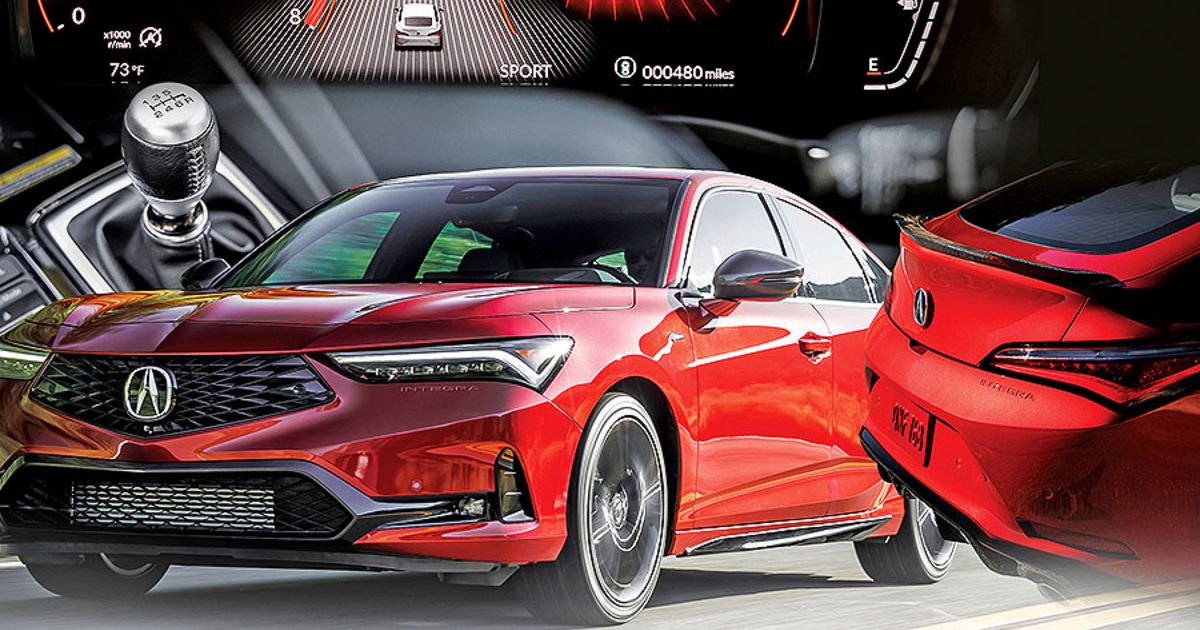
While Acura speeds toward an all-electric future, it’s first putting some emphasis on what will be the brand’s last gasoline-powered new vehicle: the return of the Integra as a 2023 model.
That’s because premium Acura needs to fill the void left by its more conservative entry-level ILX compact sedan and grab the last remaining millennial buyers who still care about driving performance.
“Positioning the Integra is really an important thing, as a true gateway to the brand, and a worthy successor of the original Integra,” Emile Korkor, assistant vice president of Acura national sales, told Automotive News.
“We are excited about what this latest generation is going to do for building a loyal customer base as we build toward electrification,” Korkor said.
The Integra — a nameplate last offered in 2006 — gets a different personality from the ILX it replaces. The ILX was a much more conservative entry into the Acura brand, according to Stephanie Brinley, principal analyst for IHS Markit.
“It leaned more toward trying to feel luxurious and comfortable,” Brinley said. “[The new Integra] goes back to the first Integra’s roots of being passionate.
“Acura has had some great driving cars in its past, and it’s good to bring that back.”
Korkor said his team concluded that the car’s audience would favor some distinct performance-oriented characteristics, such as a six-speed manual transmission only offered on the top trim.
“We expected the enthusiast reaction to be good, but it’s been exceptional,” he said, noting that “by design” the bulk of Integra production will be with the manual transmission offered only on the fully loaded A-Spec with Technology trim, which costs a competitive $36,986, including shipping. The base model costs $31,895.
Expecting the Integra to deliver most of its volume at the higher price point was part of the blueprint from the beginning, but it is contrary to Acura’s past product launches, which sought to create competition around the base trim.
“Rather than focusing on coming in at a low price point, we wanted to put our best foot forward in terms of our strongest model, the A-Spec,” Korkor said.
Unlike in the past when the automatic transmission was the optional, more expensive option, manuals have become associated with more premium, performance-driven vehicles.
The segment has evolved because competitors that are now playing in the premium compact-sedan space — which Korkor says the Integra pioneered — are operating more on the high end.
If you do find a manual transmission, he said, it’s not on a stripped-down version.
Acura will be able to push its top-end trim at an accessible price because the car is based on the Honda Civic, a small-car platform that is sold globally.
The Integra will derive other cost-competitive benefits from being built at Honda’s high-volume factory in Marysville, Ohio, whereas previous-generation Integras bore the cost of importing, noted Ed Kim, president and chief analyst for AutoPacific.
“Integra plays an entry-level role in the Acura lineup and it’s a relatively low-investment model that draws heavily from the Honda Civic,” Kim said.
Brinley agrees: “At a product level, the Integra still shares with the Civic, as the first Integra shared with Civic. It’s still the entry to Acura’s lineup.”
Production proximity to the Acura fan base also is key. The U.S. is a bigger market for Acura in general, she said.
But whether Acura will carry Integra forward into the next phase of electrification remains to be seen.
Korkor says no, but he leaves the door open: “Whoever purchases an Integra is going to be ready for the next generation, whatever iteration it might take.”